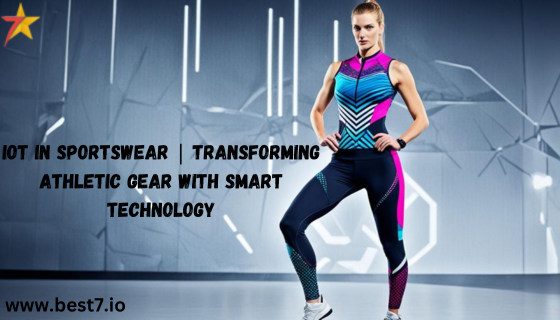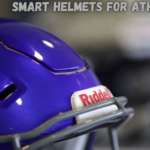
The introduction of the Internet of Things into sportswear reshaped the way players train, compete, and generally evaluate their performance. With sensors and connected technology embedded, activity wear entered the IoT sphere, making tracking instant, comfort greater, and athletic performance better.
The introduction of a tech level has enabled a large leap in the history of sportswear, making intelligent sports clothing that would meet not only pros’ but also amateurs’ needs.
The Impacts
In the last decade, IoT in activity wear has boosted dramatically, with companies incorporating the technology in their products to provide them with more options and customization possibilities. However, the core drive of these innovations was the intention to offer players relevant and profound insights on their sports activity wear technology.
Thanks to active wear connected to the IoT, players now can track their heart rate, velocity, body temperature, and muscle activity. This monitoring is instant. Examples of such wear are the introduction of connected activity wear by major brands, Under Armour and Nike, which developed smart activity wear synced with apps to monitor athletes’ performance.
This monitoring not only allows players to realize their performance but also makes the role of a coach and trainer more effective. A case example of one basketball team where smart sportswear was tested reported a 12% increase in endurance of a player in a season due to constant monitoring of their recovery rate and workload.
The Internet of Things offered numerous innovative solutions to various industries, one of which was sportswear. By 2020, the global market for smart sports gear reached $2.5 billion, and future projections were that this number would grow to $7.9 billion by 2025.
The main reason for an increase in demand was athletes’ need for real-time sports monitoring, as it yielded insights that could help individualize training and make it more effective.
Innovations in IoT Sportswear and Smart Athletic Gear
1. Smart Fabrics
The point of the invention was not simply tracking; sportswear itself saw immense technological advances, as smart fabrics that provided real-time data were also capable of adapting to the environment.
Not only were they capable of enhancing the performance of an athlete, but this smart athletic gear was also used to prevent injuries.
Perhaps the most significant advantage of that era was that one could track all information not based on previous patterns but his or her own data. Hence, initially, the fabrics would have served to monitor muscle strain and input data on its wear, but its advantages were almost limitless.
According to IoT clothing and wearable technology in sportswear, the prediction was that by 2026, 40% of all clothing worn for sports would have some form of IoT.
2. Connected Footwear
Yet another invention for preventing sports-related injuries was shoes that would monitor an athlete’s running technique, impact on the ground, and foot pressure. In addition, those shoes would send alerts to the owner whenever their posture worsened so as to prevent an injury.
An example of an IoT-enabled sports shoe from Nike could send the runner data on their stride so that they can work on their technique and improve their performance.
3. Temperature-regulating clothing
For those athletes that had an in-built system for using energy, another group of adaptive smart athletic gear was developed to regulate the athlete’s temperature: keeping them cool when hot and heating when cold.
4. Performance Tracking
These undoubtedly included various IoT sports technologies for tracking sports performance. They could be used by any athlete, including devices planted in the wristbands or helmets or those sewn into their shirts. The devices provided the owner with valuable information about his or her movements, the amount of energy expended, and his or her recovery.
5. Wearable sensors
Sportswear was equipped with wearable sensors able to capture biomechanical data. As a result, the use of this data in training allowed athletes to modify workouts that were not proper to decrease the risk of injury.
It helped track and correct improper movements. Moreover, the sensor wearable helped in making everyday recommendations for athletes for comfortable training in making maximum efficient workouts.
6. Customized sportswear
Sportswear could be tailored to the needs of a particular sport or even a particular athlete. The companies that produce sportswear analyzed the big data that was coming out of the wearable devices and tailored their clothing to an athlete’s requests and needs.
Such companies were able to transform the athlete’s everyday needs into fabric needs and create comfortable and effective smart sportswear.
7. Recovery
Smart clothes helped athletes recover quicker. Warm-up garments were also used that helped to track the blood flow in the muscles and wake them up before the competition.
Moreover, this garment tracked the blood flow after intensive training to help muscles relax more rapidly. As a result, it led to a decrease in muscle fatigue and less soreness of muscles.
Overall, the benefits of wearable technologies allowed sportswear to develop not towards aesthetics and comfort but primarily towards specifics. Such opportunities allowed athletes to obtain the best results with the maximum possible use of clothing.
Sportswear innovations continued to develop at the expense of athletes and ordinary customers. By 2030, 60% of the professional athletes were expected to use IoT-connected wearables in training. For instance, the integration of IoT into smartwear allowed tracking the sportswear and all the necessary data for training and recovering.
In other words, the IoT was providing streams and streams of data that allowed getting smarter. As a result, the data helped to train more efficiently and properly to recover more effectively. Thus, the risk of injury decreased.
The future of IoT fitness clothing has never been brighter. By 2028, experts estimate that IoT sportswear will be equipped with AI systems that predict when an athlete is about to get hurt based on their previous data.
Since many of the performance-related failures arise due to these minor injuries or pains, AI analysis would be an amazing feature and one that would greatly enhance one’s training schedule. One of the unforeseen benefits of these AI systems is that they will help athletes avoid common training failures.
When they spot these mistakes and notify the athlete, they will enable a significant increase in performance by making people a lot less likely to overwork. Moreover, it has been projected that by 2032, performance will be boosted by ten percent and by up to twenty percent.
Projections for IoT in Smart Athletic Gear
Looking ahead, the future of IoT-enabled sportswear promised even more groundbreaking advancements. Wearable technology and data science will combine to elevate sports performance to a whole new level, with intelligent sportswear leading the way in shaping the future of athletic training and competition.
AI-Driven Analytics
Future IoT sportswear will incorporate AI systems capable of analyzing the data and making personalized proposals. Such benefits will enable people to train more effectively and increase their performance by up to twenty percent by 2032.
Expansion into New Sports
While IoT devices in athletic wear were popular in such events as running, cycling, or basketball, the next decade will see them become a staple in niche sports such as swimming, martial arts, or endurance racing. As of 2029, the use of IoT in sportswear will increase by eighteen percent.
Increased Use of Greener Materials
Ultimately, while the actual design and devices used in IoT sportswear ten years from now are probably going to be different than current ones, one aspect will be extremely impactful—the sustainability factor. Great focus will be placed on integrating this factor in the clothing, and people should expect to see many items made of such material.
Smarter Injury Prevention
With better technology, IoT wearables would only improve in helping prevent injuries. In the future, predictive analytics would become a standard in every piece of athletic gear. It would draw from the vast amount of historical data to predict injury chances with 85% accuracy.
Seamless Integration with AR and VR
The next step for IoT in athlete performance would likely involve AR or VR technologies. They would enable athletes to train in the real world with fully virtual feedback from their equipment.
Enhanced Recovery Tools
Smart sports clothes would also develop recovery-focused tools. These could be anything from pieces of clothing giving a specific muscle a slight electric shock to wearables tracking sleep quality. With the help of IoT tools by 2035, the recovery time for injuries would drop by 30%.
Greater Adoption
In the same year, as much as 70% of all professional athletes would use some kind of IoT-enabled sportswear as part of their daily training regime. Furthermore, the adoption rate among amateurs would be at 40%.
Considering the developments in the field, specialized sportswear would become way more affordable and used by the average population living a more US-tier active lifestyle.
In conclusion, with the help of IoT-supported sportswear, the new age of athleticism has arrived. As digital technologies develop, the possibilities for monitoring athlete’s health and performance will only grow.
In a few years, all sorts of data about athlete well-being and progress would be available on demand, providing tools for exceeding their limits.












